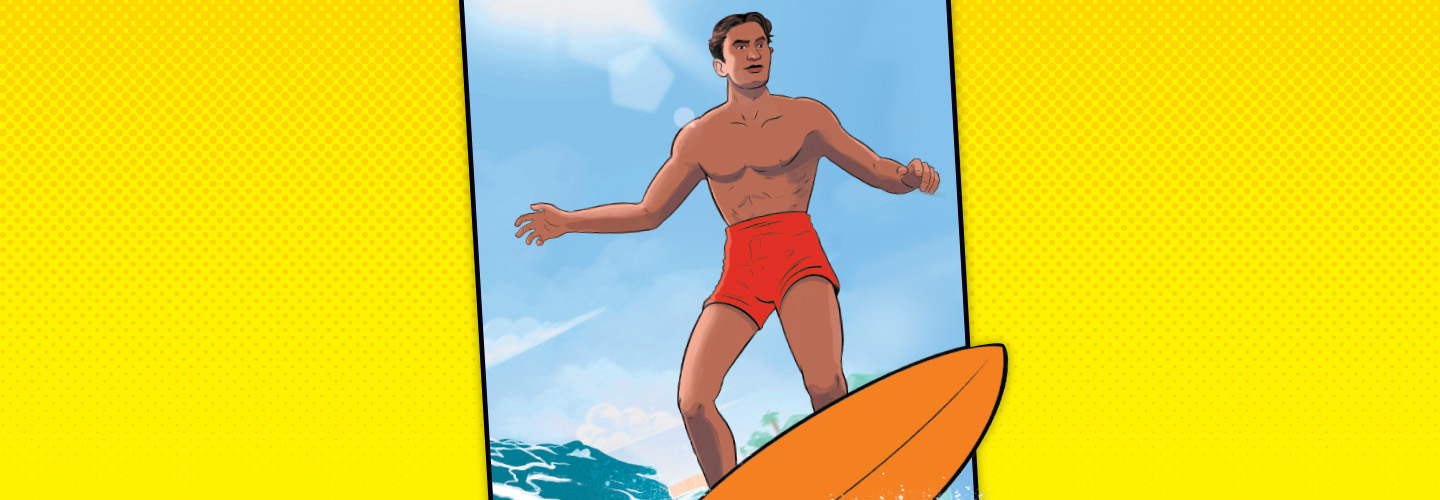A crowd lined the shore of a beach near Sydney, Australia. It was December 1914. Duke Kahanamoku (kah-hah-nah-MOH-koo) put his surfboard into the ocean and paddled toward the waves. When he zoomed back into view, he was standing tall on top of the water.
Kahanamoku put on a show. He rode wave after wave, facing forward and backward—he even stood on his head! His surfing exhibitions helped turn the sport into a national craze in Australia.
Kahanamoku went on to introduce the sport to the world. Today, he is known as the father of modern surfing—and one of the greatest there has ever been.

